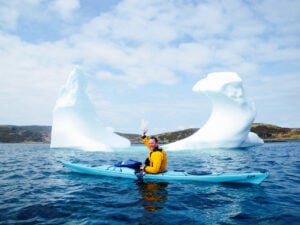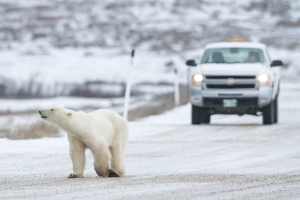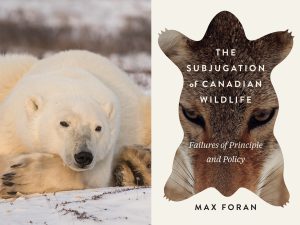We see eagles and cranes, various birds and a lone caribou grazing on the low bushes. There’s also no shortage of red herring in the form of rocks that resemble bears. Fortunately, Jim spots a bear that looks like a rock instead. He manoeuvres the buggy closer until we see a large male, splayed on the ground in an effort to stay cool, resembling nothing less than a carnivorous rug. The polar bear turbocharges the kids, or maybe they’re just responding to the chocolate chip cookies.
That evening, having blown off some steam in the community centre bowling alley, we gather for sunset s’mores at the beach. The kids throw their rocks, and the parents have a genuine wow moment. The northern lights show up again that evening, although Churchill’s 10 p.m. curfew alarm is a loud reminder that we should stay indoors and avoid wondering about. There’s one more adventure before we head to the airport: dog-carting with Dave Daley and his friendly companions at Wapusk Dog Yard. Following a fun couple of runs on a track, Dave explains the proud history of his Metis people, fielding questions about dogsledding and emphasizing that nobody goes anywhere without strong leadership and committed teamwork.
The American kids were missing a week of school to be on this trip, but after a busy week, nobody had any doubt about the quantity or quality of their schooling in Churchill. It’s been an unforgettable field trip to learn about exotic wildlife and the impact of climate change in the area, as well as geography, history, art, and Indigenous culture. We learned about the clever engineering behind Tundra Buggies and Jetboats and how communities can thrive in challenging environments. Making new friends, the kids absorbed the positive social impact that accompanies any bucket list experience. We have all learned so much, including the fact that one should never let school get in the way of a good education.












